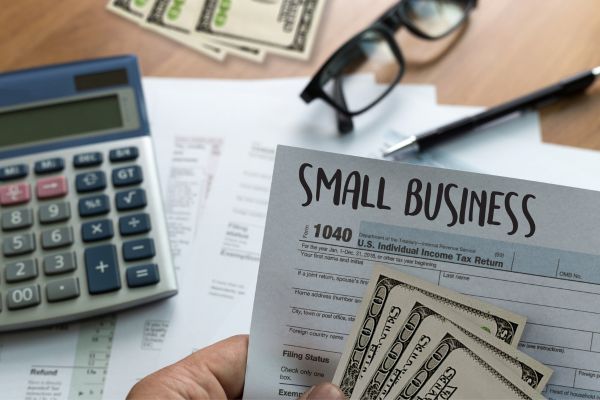Why Business Cards Still Matter
In today’s digital age, you might wonder, are business cards still relevant? The short answer is, absolutely! Business cards have been around for centuries, and they’re not going away anytime soon. Whether you’re a seasoned entrepreneur or just starting out, business cards remain one of the most powerful tools in your professional arsenal. They provide a tangible reminder of who you are and what you do, making a lasting impression on potential clients and partners. But what makes a business card truly effective, and how can you ensure yours stands out from the crowd? Let’s dive in and find out.
The Importance of Business Cards
Business cards are more than just a way to share your contact information. They’re a reflection of your brand, your professionalism, and your attention to detail. When you hand someone your business card, you’re giving them a piece of your brand that they can hold onto, something that keeps you top of mind. A well-designed business card can convey trust, credibility, and the value you bring to the table. It’s a simple, yet powerful tool for networking, and it can open doors to opportunities that you might not have had otherwise.
Key Benefits of Business Cards:
- First Impressions Matter: A business card is often the first impression someone has of your brand. Make it count!
- Tangible Connection: In a world dominated by digital interactions, a physical business card creates a personal touch.
- Networking Tool: Business cards are a quick and easy way to share your contact details at networking events.
- Brand Representation: Your business card is a small piece of your brand that people can take with them.
Designing the Perfect Business Card
When it comes to designing a business card, there are a few key elements you need to consider. First and foremost, your business card should be an extension of your brand. It should reflect your brand’s colors, fonts, and overall aesthetic. But it’s not just about looking good – your business card also needs to be functional. It should clearly communicate who you are, what you do, and how people can get in touch with you. Let’s break down the essential elements of a great business card.
Essential Elements of a Business Card:
- Name and Title: This might seem obvious, but make sure your name and title are clearly displayed. This is the most important information on your card.
- Company Name and Logo: Your company name and logo should be prominently featured. This helps reinforce your brand identity.
- Contact Information: Include your phone number, email address, and website. If applicable, you might also include your social media handles.
- Design and Layout: The design of your business card should be clean and easy to read. Avoid clutter and stick to a simple layout.
- Paper Quality: The quality of the paper you choose can say a lot about your brand. Opt for a thicker paper stock for a more premium feel.
- Unique Features: Consider adding a unique element to your business card, such as a special finish, embossing, or even a custom shape. This can make your card stand out from the rest.
Different Types of Business Cards
Not all business cards are created equal. Depending on your industry and personal preference, there are several different types of business cards to choose from. Let’s explore some of the most popular options.
Traditional Business Cards
These are the most common type of business card, typically made of standard paper stock with a simple design. They’re cost-effective and easy to distribute, making them a popular choice for many professionals.
Premium Business Cards
If you want to make a stronger impression, premium business cards are the way to go. These cards are made from higher-quality materials and often feature special finishes like embossing, foil stamping, or a matte finish. They’re a bit more expensive, but they can leave a lasting impression.
Magnetic Business Cards
Magnetic business cards are a great option for those in service industries, like real estate or home repair. These cards can be stuck to a fridge or filing cabinet, ensuring that your contact information is always within reach.
Digital Business Cards
In the age of technology, digital business cards are becoming increasingly popular. These cards can be shared via QR code or NFC technology, allowing you to exchange contact information with just a tap of a smartphone. They’re eco-friendly and can be easily updated with new information.
Creative Business Cards
If you’re in a creative industry, like graphic design or photography, your business card should reflect your creativity. Consider using unique shapes, materials, or interactive elements to make your card truly memorable.
How to Use Business Cards Effectively
Having a stack of business cards is one thing, but knowing how to use them effectively is another. Here are some tips to help you get the most out of your business cards.
Networking Events
Networking events are one of the best places to hand out your business cards. Make sure to always have a few cards on hand, and don’t be afraid to hand them out. When exchanging cards, take a moment to look at the card you’ve been given and comment on it. This shows that you’re interested and engaged, and it can help you stand out in the other person’s mind.
Follow-Up
After a networking event, don’t just toss the business cards you’ve collected into a drawer and forget about them. Take the time to follow up with the people you’ve met. Send a quick email or connect with them on LinkedIn. Mention something specific from your conversation to jog their memory and make your follow-up more personal.
Include in Packages
If you ship products to clients or customers, include a business card in the package. It’s a simple way to keep your contact information in front of your clients, and it can encourage repeat business.
Leave Them at Relevant Locations
If there’s a location where your potential clients or customers frequent, leave a stack of business cards there. This could be a coffee shop, a coworking space, or a local store that aligns with your target market.
FAQs about Business Cards
Q: What information should I include on my business card? A: At a minimum, your business card should include your name, title, company name, phone number, email address, and website. You might also want to include your social media handles, depending on your industry.
Q: How many business cards should I order? A: It depends on how often you plan to hand them out, but a good starting point is 500-1000 cards. If you’re attending a large conference or networking event, you might want to order more.
Q: Can I create my own business cards at home? A: Yes, you can create your own business cards using a printer and card stock. However, for a more professional look, it’s recommended to use a professional printing service.
Q: What size should my business card be? A: The standard size for a business card is 3.5 x 2 inches. This size fits easily into a wallet or business card holder.
Q: Are digital business cards better than traditional ones? A: It depends on your industry and target audience. Digital business cards are eco-friendly and convenient, but traditional business cards offer a tangible connection that some people prefer.
Conclusion: Make Your Mark with Business Cards
Business cards may be small, but they pack a big punch when it comes to making connections and growing your business. Whether you’re attending a networking event, meeting a potential client, or simply want to leave a lasting impression, a well-designed business card can help you achieve your goals. Remember, your business card is an extension of your brand, so make sure it reflects the quality and professionalism that you bring to the table. With the right design, materials, and strategy, your business card can be a powerful tool in your professional toolkit.



